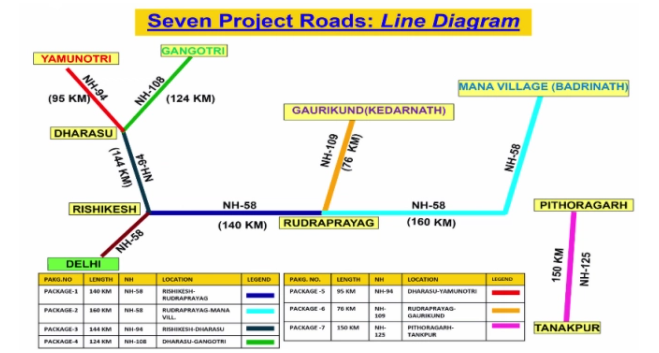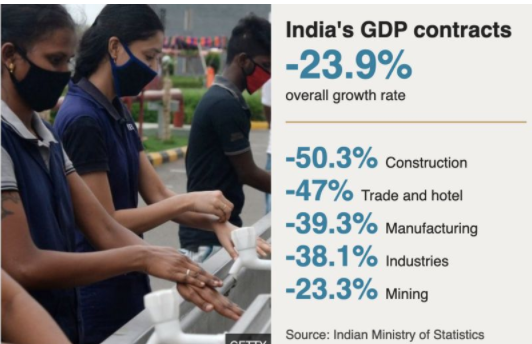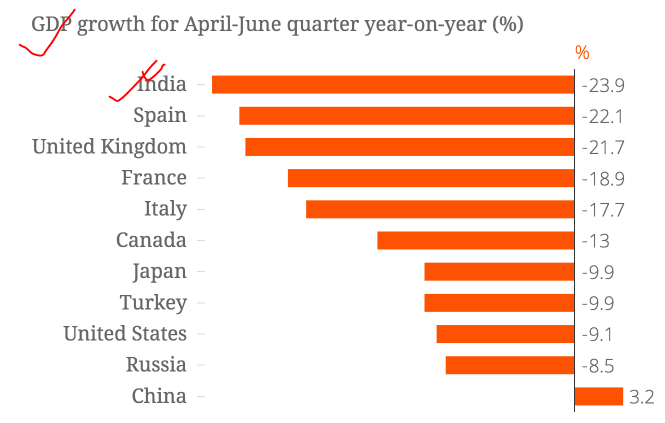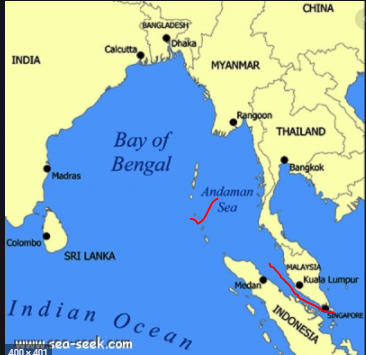Goaltide Daily Current Affairs 2020
Current Affair 1:
SC Issues Directions for Protection of Shivlinga At Ujjain's Mahakaleshwar Temple

This is an example of Judicial Activism.
The Supreme Court on Tuesday issued directions to the Temple Management Committee for the preservation of Shivling in the Mahakaleshwar Temple at Ujjain.
A bit history:
It is pertinent to note that even though the top court had refused to interfere with the rituals being observed at the historic Mahakaleshwar Temple in Ujjain while dealing with the issue of protecting the 'Jyotirlingam' at the ancient temple, the apex court had constituted an expert committee to survey and analyze the Jyotirlingam and prepare a report stating the rate at which the deterioration in its size was taking place and measures to prevent it. This Expert Team visited Ujjain on January 19, 2019, after which its report indicated that there was erosion of Shivalinga after which the aforementioned directions were given by SC.
A bench issued the following directions for the preservation of the Lingam after taking into account the circumstances of the Report elaborated by Expert Committee:
- No rubbing should be done
- No devotees to be allowed to rub the Shivling
- Rubbing of Curd, Ghee & Honey should also be stopped & only pure milk should be allowed to be poured on Shivling.
- It would be appropriate that only pouring of a limited quantity of pure milk is allowed by the Committee. Whereas in the traditional puja to be done on behalf of the temple, all pure materials can be used"- Supreme Court
- If any violations are found to be done by the Pujari's or Purohit, Temple Committee shall take action against them
- Temple committee shall provide pure milk from its own resources & pure water and maintain the required pH value
- The Temple Committee to ensure that the pH value of Bhasma during the Bhasma Aarti is improved and Shiva lingam is preserved from further deterioration and to implement the best methodology to prevent further damage to the Lingam
- Weight of Mund Mala and Serpakarnahas is further reduced to preserve the Shivalingam from mechanical abrasion.
About Mahakaleshwar Temple
- Situated on the banks of the holy river Shipra in Ujjain, the Mahakaleshwar Temple dedicated to Lord Shiva is one of the most famous shrines in the country.
- The presiding deity of this ancient temple is the Mahakaleshwar Jyotirlinga, a Swayambhu, meaning a self-originated Linga. It derives strength from itself, and the need to infuse powers by performing the mantra shakti is not necessary.
- Interestingly, the Mahakaleshwar Jyotirlinga is Dakshinamukhi, meaning it faces the south, unlike the rest of the Jyotirlingas. Temple idols usually don't face the southern direction, and hence the speciality.
- The main temple complex is a three-storeyed structure with the Lingas of Mahakaleshwar, Omkareshwar and Nagchandreshwar installed in lower, middle and upper tiers respectively.
- One can also find a Kunda named Koti Teertha inside the temple complex. For the unversed, the presence of a kunda (a small water body or a pond) is a common feature in the ancient temple complexes.
Current Affair 2:
Physicists Detect Gravitational Waves from Heaviest Black-Hole Merger
Astronomers have primarily observed two flavours of black holes. The stellar-mass black holes are up to a few tens of times the mass of our Sun. And the supermassive black holes present at the centres of galaxies like our own are between hundreds of thousands and a billion times as massive as the Sun. Between them lies a barren region where black holes are conspicuous by their absence.
That is, we haven’t observed any black holes whose mass is more than that comparable to hundreds of stars but less than that of billions of stars.
- Astronomers have long been puzzled by this perceived mass gap in the evolution of black holes. They have theorized the existence of intermediate-mass black holes with masses between 100 and 100,000 solar masses, but we have never observed them. The latest gravitational waves announcement from the LIGO-Virgo collaborations could change this.
- On September 2, physicists from the collaborations announced that they had detected the most massive black hole merger ever observed using gravitational waves.
- The event has been designated GW190521. The two initial black holes, around 85 and 66 solar masses, collided to form a black hole around 142 times as massive as our Sun. This is the first ever observation of a black hole in a range between stellar mass and supermassive black holes.

“Ringdown” method has helped to detect

LIGO stands for Laser Interferometer Gravitational-wave Observatory. It consists of two detectors located in Washington and Louisiana, in the US. Virgo is a gravitational-wave observatory in the Cascina commune of Italy.
Current Affair 3:
Char Dham Yatra
News was:

Before proceeding why, it is Himalayan Bunder, get a brief introduction about this Project.

Char Dham All Weather Road Project is a two-lane expressway project currently being executed in Himalayan state Uttarakhand. The project proposes widening of single lane roads into double lane by up to 10 meters. The stated aim of the project is to improve the accessibility to Char Dham (shrines) namely Yamunotri, Gangotri, Badrinath and Kedar Nath. The project also proposes creation of 889 km long national highways to connect whole of Uttarakhand state. It has been divided into 7 packages comprising of 9 destinations including Tanakpur to Pithoragarh stretch.

Tourist Destination.
Uttarakhand, one of the most visited tourist destinations in the country, has four prominent pilgrim-destinations namely Yamunotri, Gangotri, Kedarnath, and Badrinath, collectively known as Char Dham, Nestled among the serene heights of the great Himalayas. These pilgrimage centers draw the maximum numbers of pilgrims each year, thus becoming the most important hubs of religious travel in the whole of Northern India. Traditionally, the pilgrimage begins from the West and ends in the East. Thus, the Char Dham Yatra commences from Yamunotri, then proceeding to Gangotri and finally to Kedarnath and Badrinath.
These are considered the major centres of Hindu faith as It is believed that visiting these shrines helps to attain „moksha?. The importance of this yatra can be cited from the fact that tourist inflow has increased on year to year not just for the locals but for the foreigners too. Tourists are increasing every year.

Why it is Blunder?
The National Environment Policy 2006 envisages several measures to conserve mountain ecosystems. The proposals include appropriate land-use planning, watershed management, farming methods and promotion of eco-friendly and sustainable tourism. Perhaps most importantly, it advocates “best practice” norms for infrastructure construction in mountain regions to minimize or avoid damage to sensitive ecosystems and despoiling of mountain landscapes (Use this statement in every infrastructure projects anywhere, one marks extra). Char Dham Projects, as per the author is against this principle.
Importance of Himalayas:
- The Indian Himalayan region hosts about 8,000 species of flowering plants, which is about 50% of all flowering plants of India. Of this, nearly 30% are endemic to the region. There are over 816 tree species, 675 edibles and nearly 1,740 species of medicinal value here.
- The Himalaya, with its vast green cover, is also a major sink of carbon dioxide. Annual carbon sequestration by the forests of western and northeastern Himalaya and protective cover for the catchments of the Bhagirathi, Alaknanda and Mandakini valleys – a first line of defence against erosion – are just two important ecosystem services rendered by Himalayan forests.
- We must remember that the unique Himalayan landscape – with steep slopes and sharp gradients – are not inherently amenable to human engineering. They are dynamically heterogeneous and change in their properties, in terms of climatic variables, hydrological processes and biodiversity, at every turn.
- Any human-induced changes to these local ecological parameters will have their overall impact on stream run-offs and erosional or depositional processes.
- Considering the vulnerability of the biological and physical features of the Himalayan ecosystems, we must think of how we can reduce the scale of human-induced disturbances at the community and local levels.
The Char Dham project goes against just such an environmental outlook and ethos. Almost 50,000 trees are to be felled for the Char Dham project. These include slow-growing, high-altitude trees like deodar (Himalayan cedar), birch and oak. Two experts of the committee formed by the Supreme Court have also submitted a critical rejoinder on the Char Dham Project and defined this road construction work as an act of irresponsibility and disregard towards a highly fragile ecology.
Also, you can add that, realizing the nuances of Himalayan ecology, the mission document on sustaining the Himalayan ecosystem, released by the Ministry of Science and Technology in June 2010, highlights that the concerned state governments should consider promulgating, as soon as possible, the following guidelines for road construction in hilly areas:
- Environmental impact assessment to be made mandatory for the construction of all state and national roads and expressways of more than 5 km length, including in the extension and widening of existing roads and excluding inter-village roads
- Road construction should provide for the treatment of hill-slope instabilities resulting from road-cutting, cross drainage work and culverts, using bio-engineering and other appropriate technologies. None has been followed.
It’s a debate of Development versus Sustainable Development. Let’s see what happens. Don’t get emotional while reading such article. You are an aspirant, think practically.
Current Affair 4:
India's GDP Shrinks a Record 23.9% in First Quarter of FY'21
For analyzing and much detail study, read Daily news section of last two days, in which we have given link of important news article. Here just basic few points you read.
India’s economy contracted by a whopping 23.9% in the first quarter of the 2021 financial year, in what is the latest sign of the toll that the COVID-19 lockdown has taken on economic activity. According to data released by the statistics ministry on Monday evening, real GDP for the April-June 2021 quarter fell by 23.9% in comparison to the same quarter a year ago.

Though agriculture output grew by 3.4% in Q1, it was hardly enough to make up for the devastation in services (-27%) and manufacturing (-39.3%) sectors. Within services, construction is a large component which is also employment-intensive, and this showed a 50% decline.

India has become the worst performing economy among the G20 nations in April to June quarter.

Why is India impacted far more than other G20 countries? Economists say,
- First, the lockdown was not properly implemented, so the benefit of lockdown could not be obtained. The lockdown is being eased while the number of cases is rising rapidly. The first round of attack is proliferating, and the number of infections is increasing creating huge uncertainty. Repeated local lockdowns have had to be ordered, which disrupts production.
- Second, as mentioned above, there is a very large unorganized sector unlike other big economies. People in this sector are poor and cannot cope with a crisis. The authorities have ignored this factor.
- Third, a large number of people are alienated from the system and lack faith in the authorities. So, they flout official pronouncements. They didn’t followed rules. Some people believe that this is a manufactured crisis and the authorities are fooling them. Often, one sees people going around without masks and not maintaining physical distancing. This enables the virus to proliferate. This is also the lesson from countries that have been successful in controlling the spread of the disease – the moment there is laxity, the disease starts proliferating again.
Any good results can be expected in future? According to economists:
Thus, there are long-term factors which make India’s situation worse than that of other major economies. Even if one accepts the official data, the Indian economy is in depression and not just recession. It will take a long time to get out of it – till expectations change. For that, the government needs to change its stance from cautious to bold.
The chief economic advisor in the finance ministry has argued that some of the high frequency indicators for August show a possible V-shaped recovery. But he is still not sure whether India will have a positive GDP growth for the next two quarters. This is worrisome.
Current Affair 5:
Indra 2020 to be held in Andaman Sea
India and Russia are scheduled to hold Indra 2020 in the Andaman Sea, close to the Strait of Malacca instead of the Indian Ocean Region (IOR). The Strait of Malacca connects Indian Ocean to the South China Sea and is 900 km in length and is also a prominent trade route between East Asia and West Asia-Europe.

The Indra series of exercises began in 2003 and was conducted as a bilateral naval exercise alternately between the two countries. Indra 2020 will be the first bilateral naval exercise since all such engagements were suspended due to Covid-19 pandemic.
Recently, India has withdrawn from the Kavkaz-2020 multinational exercise in Russia due to the restrictions posed by the pandemic.
<< Previous Next >>


